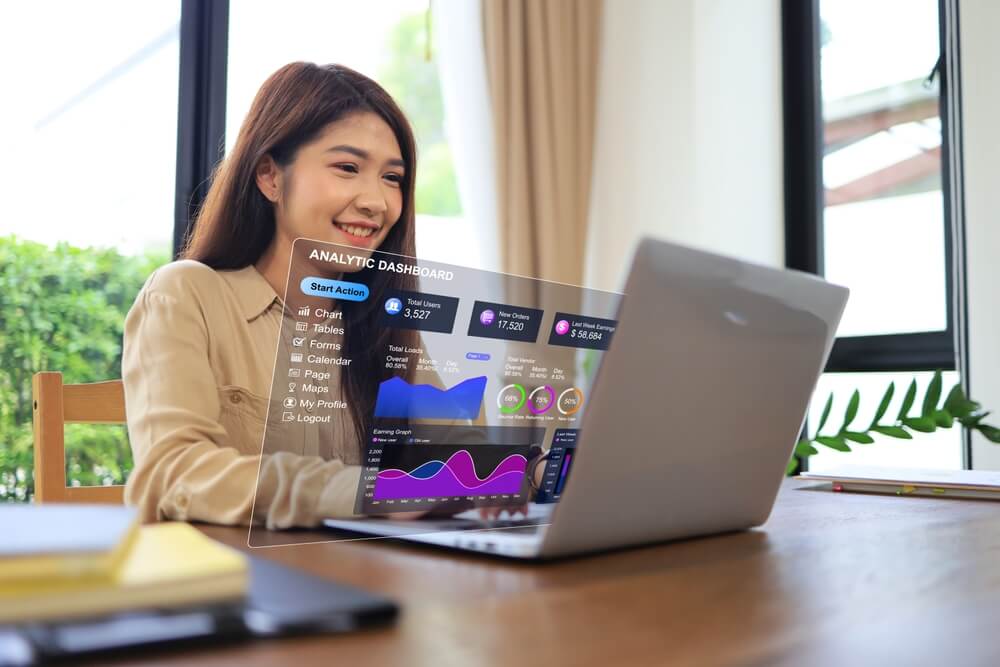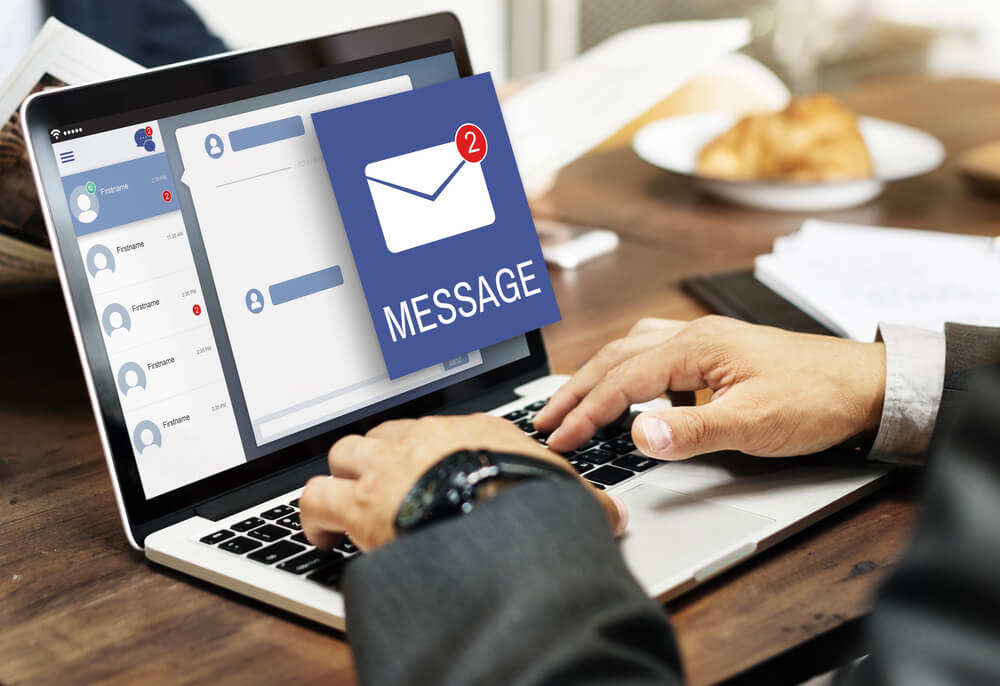
How Data Analytics Boost B2B Email Campaigns for Great Results
Data analytics enhances B2B email marketing by providing insights into customer behavior, preferences, and engagement patterns. It personalizes content and optimizes email timing based on historical interactions.
This guide focuses on how experienced B2B marketers harness data to improve email campaigns, discussing:
 Data analytics allows marketers to categorize recipients based on various criteria such as demographics, behavior, and engagement patterns. This enables you to break down a broad audience into segments for targeted and relevant content.
Segmentation also offers the following benefits:
Data analytics allows marketers to categorize recipients based on various criteria such as demographics, behavior, and engagement patterns. This enables you to break down a broad audience into segments for targeted and relevant content.
Segmentation also offers the following benefits:
 Data analytics determines the optimal timing and frequency for sending B2B emails by identifying the behavioral patterns of recipients. This insight helps strategically schedule and send emails when customers are most likely to engage. It also determines the best frequency to avoid overloading them with information.
Respecting people’s time is one of the best practices in B2B marketing. They want to engage with emails that provide value without demanding excessive commitment.
Knowing the best time and frequency for your emails helps craft concise, relevant, and easily digestible content. This copy builds a positive brand image that improves conversion and user experience.
Data analytics determines the optimal timing and frequency for sending B2B emails by identifying the behavioral patterns of recipients. This insight helps strategically schedule and send emails when customers are most likely to engage. It also determines the best frequency to avoid overloading them with information.
Respecting people’s time is one of the best practices in B2B marketing. They want to engage with emails that provide value without demanding excessive commitment.
Knowing the best time and frequency for your emails helps craft concise, relevant, and easily digestible content. This copy builds a positive brand image that improves conversion and user experience.
- Understanding data analytics
- Segmenting and personalizing content
- Optimizing email content and design
- Knowing the timing and frequency
- Measuring success
Tired of investing in Search Engine Optimization without getting any results? See how Digital Authority Partners turns that around!
Understanding Data Analytics in B2B Email Marketing
Data analytics systematically examines and interprets information. In B2B email marketing, this involves studying open, click-through, and conversion rates and customer segmentation to understand audience behavior and preferences. The insights you gain inform future content customization, targeting, and campaign optimization. Data analytics helps refine strategies based on empirical evidence for more effective, targeted communication. B2B data analytics differs from business-to-customers (B2C) because of the complexity and long sales cycles. Further, B2B:- Focuses beyond individual transactions to nurturing long-term partnerships.
- Emphasizes account-based analytics, tracking interactions at the organizational level rather than individual consumers
- Involves scrutinizing metrics such as lead quality, customer lifetime value, and purchase history to align marketing with the organization’s more intricate and strategic nature.
Promoting Segmentation and Personalization
 Data analytics allows marketers to categorize recipients based on various criteria such as demographics, behavior, and engagement patterns. This enables you to break down a broad audience into segments for targeted and relevant content.
Segmentation also offers the following benefits:
Data analytics allows marketers to categorize recipients based on various criteria such as demographics, behavior, and engagement patterns. This enables you to break down a broad audience into segments for targeted and relevant content.
Segmentation also offers the following benefits:
- Helps content resonate better with the intended recipients, increasing engagement, conversion, and brand value
- Enhances the campaign’s effectiveness by writing content that addresses the specific market’s unique needs and preferences
- Establishes meaningful connections and fosters trust
- Allows for personalization that drives engagement
Optimizing Email Content and Design
Data analytics is instrumental in optimizing email content and design by providing insights into what elements resonate best with the audience. Which layout or typography increases open, click-through, and conversion rates? How do you ensure you keep to brand standards and provide engaging content? Analyzing B2B email data also guides A/B testing, which involves experimenting with various elements, headlines, and call-to-action (CTA) buttons to pinpoint the most effective combinations. This testing allows you to refine the user experience based on recipient interaction with your variations on content. Creating variations of email content, subject lines, or design elements and randomly assigning them to subsets of the audience systematically assesses which elements yield the best results. Suppose a cybersecurity startup wants to experiment with different content formats in its quarterly product update emails to increase click rates. They segment the email list by chief information security officers (CISOs), security directors, IT managers, etc. They then divide the CISO segment into three:- The first group gets emails with headlines focused on threat prevention capabilities and a “Request Demo” CTA button.
- The second segment receives content about compliance insights and the “Learn More” CTA.
- The third group reads more technical emails, such as new product integrations, and a “Contact Sales” CTA.
Considering B2B Email Timing and Frequency
 Data analytics determines the optimal timing and frequency for sending B2B emails by identifying the behavioral patterns of recipients. This insight helps strategically schedule and send emails when customers are most likely to engage. It also determines the best frequency to avoid overloading them with information.
Respecting people’s time is one of the best practices in B2B marketing. They want to engage with emails that provide value without demanding excessive commitment.
Knowing the best time and frequency for your emails helps craft concise, relevant, and easily digestible content. This copy builds a positive brand image that improves conversion and user experience.
Data analytics determines the optimal timing and frequency for sending B2B emails by identifying the behavioral patterns of recipients. This insight helps strategically schedule and send emails when customers are most likely to engage. It also determines the best frequency to avoid overloading them with information.
Respecting people’s time is one of the best practices in B2B marketing. They want to engage with emails that provide value without demanding excessive commitment.
Knowing the best time and frequency for your emails helps craft concise, relevant, and easily digestible content. This copy builds a positive brand image that improves conversion and user experience.
Measuring Success with Key Performance Indicators (KPIs)
Measuring KPIs is critical in B2B email campaigns. KPIs include statistics such as open, click-through, and conversion rates. They also measure engagement, such as the time spent on the email or the number of pages viewed after clicking. These factors provide insights into the effectiveness of email marketing at different sales stages. They also prevent you from committing common email marketing mistakes. Regularly monitoring and interpreting KPIs improves the content, design, and overall strategies based on the audience’s preferences and behaviors. For instance, if the open rate is low, tweaking subject lines or optimizing send times might be necessary. Data from email campaigns also serves as a valuable resource for enhancing other marketing efforts. Insights into customer behavior, preferences, and engagement levels help develop targeted content for social media campaigns, website personalization, and paid advertising. Integrating email marketing with other digital strategies results in a more cohesive demand- and lead-generation and omnichannel approach. Understanding which emails resonate with the audience guides relevant content creation across various channels. This creates a consistent and engaging brand experience for the audience.Summing Up
Using data analytics in B2B email campaigns offers numerous benefits, including improved personalization, increased engagement, and higher conversion rates. It enables marketers to make informed decisions based on recipient behavior and optimize content, timing, and frequency for maximum impact. In addition, data analytics refines strategies by identifying trends and areas for improvement. For businesses seeking even greater efficiency and expertise, outsourcing email marketing strategies to experienced professionals such as Digital Authority Partners (DAP) provides a strategic advantage. How can data analytics transform your email marketing? Contact DAP today to schedule a free consultation with B2B experts.Want To Meet Our Expert Team?
Book a meeting directly here



